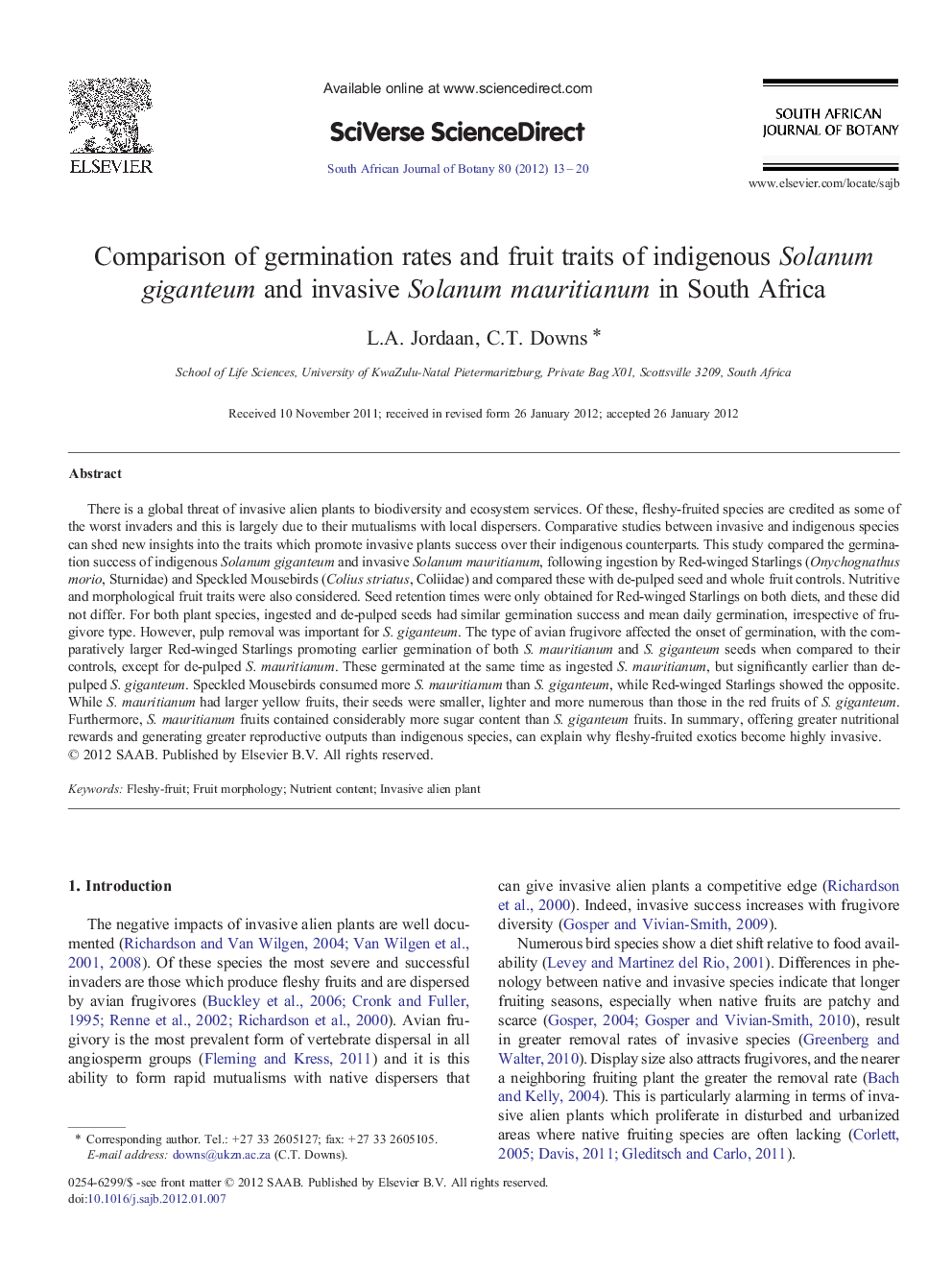| کد مقاله | کد نشریه | سال انتشار | مقاله انگلیسی | نسخه تمام متن |
|---|---|---|---|---|
| 4521012 | 1625178 | 2012 | 8 صفحه PDF | دانلود رایگان |

There is a global threat of invasive alien plants to biodiversity and ecosystem services. Of these, fleshy-fruited species are credited as some of the worst invaders and this is largely due to their mutualisms with local dispersers. Comparative studies between invasive and indigenous species can shed new insights into the traits which promote invasive plants success over their indigenous counterparts. This study compared the germination success of indigenous Solanum giganteum and invasive Solanum mauritianum, following ingestion by Red-winged Starlings (Onychognathus morio, Sturnidae) and Speckled Mousebirds (Colius striatus, Coliidae) and compared these with de-pulped seed and whole fruit controls. Nutritive and morphological fruit traits were also considered. Seed retention times were only obtained for Red-winged Starlings on both diets, and these did not differ. For both plant species, ingested and de-pulped seeds had similar germination success and mean daily germination, irrespective of frugivore type. However, pulp removal was important for S. giganteum. The type of avian frugivore affected the onset of germination, with the comparatively larger Red-winged Starlings promoting earlier germination of both S. mauritianum and S. giganteum seeds when compared to their controls, except for de-pulped S. mauritianum. These germinated at the same time as ingested S. mauritianum, but significantly earlier than de-pulped S. giganteum. Speckled Mousebirds consumed more S. mauritianum than S. giganteum, while Red-winged Starlings showed the opposite. While S. mauritianum had larger yellow fruits, their seeds were smaller, lighter and more numerous than those in the red fruits of S. giganteum. Furthermore, S. mauritianum fruits contained considerably more sugar content than S. giganteum fruits. In summary, offering greater nutritional rewards and generating greater reproductive outputs than indigenous species, can explain why fleshy-fruited exotics become highly invasive.
► There is a global threat of invasive alien plants to biodiversity.
► Comparison of related invasive and indigenous species may provide insights.
► Germination success of two Solanum species following ingestion birds was similar.
► Greater reproductive outputs and nutritional rewards may have facilitated invasion.
Journal: South African Journal of Botany - Volume 80, May 2012, Pages 13–20